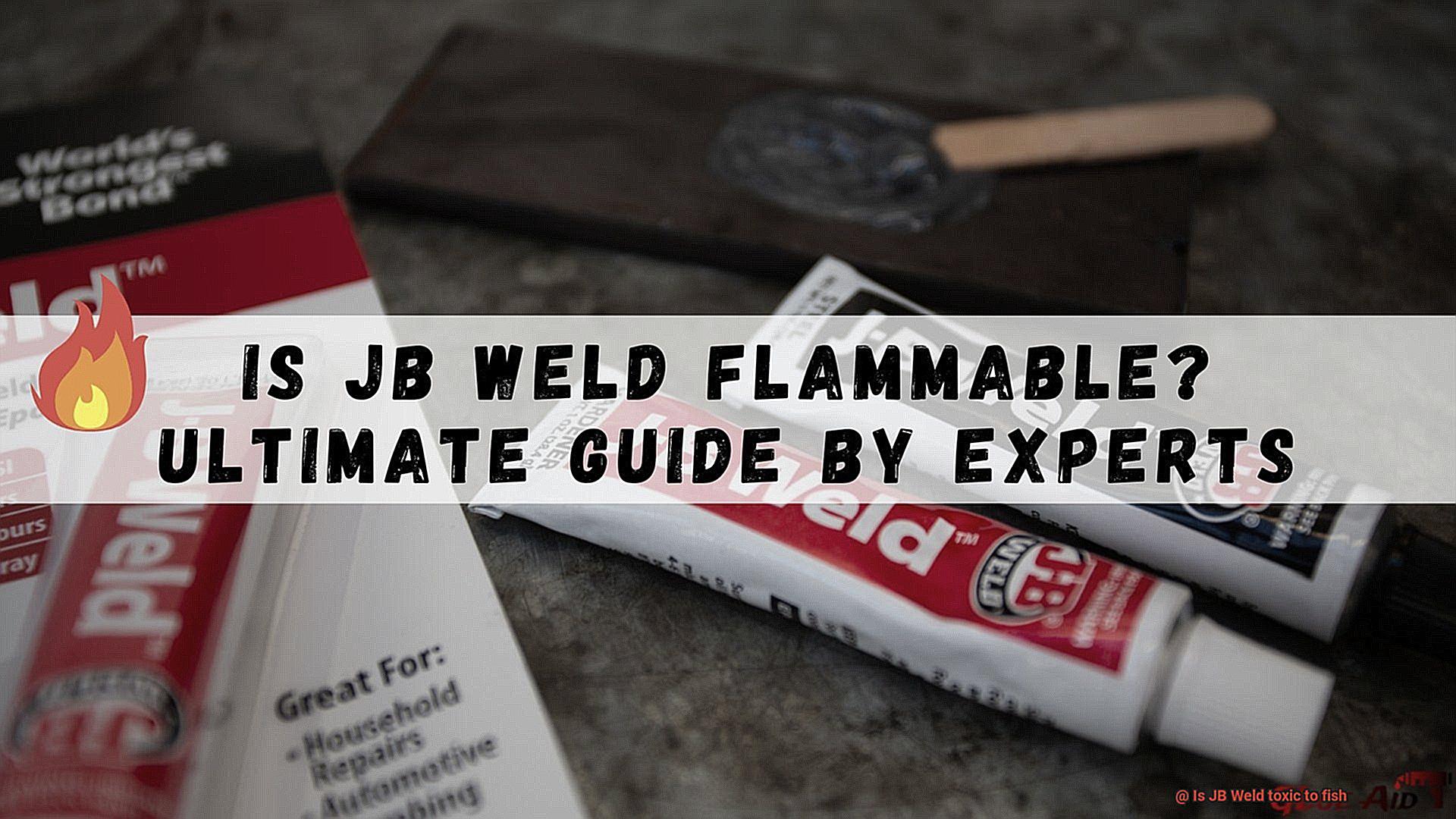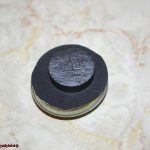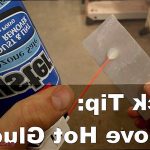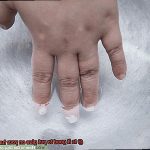Today, we’re diving deep into the world of adhesives to settle the burning question: “Is JB Weld toxic to fish?” You’ve probably heard of this legendary epoxy adhesive that can stick just about anything together. But does it pose a risk to our scaly companions? Let’s get to the bottom of it.
Join us as we explore the chemical makeup of JB Weld, uncover any potential risks for our underwater buddies, and learn some handy tips and precautions to keep our fishy friends safe while we indulge in our DIY adventures. We’re here to separate fact from fiction and give you the real scoop on JB Weld’s impact on our finned pals.
So, get ready for an eye-opening journey where we leave no stone unturned. Our mission is simple: ensure the well-being of our beloved aquatic ecosystems by arming ourselves with accurate information. After all, knowledge is power when it comes to keeping our underwater havens thriving. Let’s find out if JB Weld is a friend or foe to our fishy pals.
While we strive to provide well-researched information, it’s always smart to consult professionals if you have specific concerns about using JB Weld in your aquarium setup. So, join us on this fact-finding mission as we put any lingering doubts to rest – one adhesive bond at a time.
The Potential Toxicity of JB Weld to Fish
Contents
- 1 The Potential Toxicity of JB Weld to Fish
- 2 The Main Ingredients in JB Weld and Their Effects on Aquatic Organisms
- 3 Recommended Precautions When Using JB Weld Near Aquatic Environments or Fish Tanks
- 4 How to Ensure Proper Curing of JB Weld Around Fish Tanks
- 5 Risks of Contamination From Epoxy Residue Around Fish Tanks
- 6 Alternatives to JB Weld for Bonding Materials in Aquariums
- 7 Conclusion
In the realm of DIY projects, JB Weld often reigns supreme as the adhesive of choice. But when it comes to working near water bodies or aquariums, it’s imperative to grasp the potential risks it poses to our aquatic comrades. In this enlightening article, we will delve into the potential toxicity of JB Weld to fish, shedding light on precautions that must be taken to ensure their protection.
The Science Behind JB Weld:
JB Weld, a potent adhesive, is a fusion of epoxy resin and a hardening agent. While these components are generally harmless to humans and commonly found in everyday products, the danger to fish emerges during the curing process. When mixed, epoxy resin and the hardening agent engage in a chemical reaction, generating heat and releasing volatile compounds into the atmosphere. If not managed or contained properly, these compounds can dissolve in water, tainting the aquatic environment.
Understanding the Risks:
Fish exposed to JB Weld contaminants face an array of perilous consequences. These risks include damage to their delicate gills, liver, or other vital organs, compromised reproductive capabilities, alterations in behavior or feeding patterns, and even death in severe cases. It’s crucial to note that the level of toxicity varies based on factors such as concentration, duration of exposure, fish species, and environmental conditions.
Precautions for Protecting Fish:
To minimize the potential toxicity of JB Weld to fish, certain precautions must be followed:
- Avoid direct contact with water bodies: When working with JB Weld near bodies of water or aquariums, ensure there is no direct contact between the adhesive and the water.
- Employ protective measures: Don gloves and masks while handling JB Weld to prevent skin contact or inhalation of volatile compounds.
- Ensure proper ventilation: The curing process releases volatile compounds into the air, so it is paramount to work in a well-ventilated area to minimize their concentration.
- Dispose of excess or unused JB Weld appropriately: Adhere to local regulations and guidelines for disposing of hazardous waste. Take any remaining or unused JB Weld to a designated collection center or follow specific disposal instructions provided by the manufacturer.
Consider Aquarium-Safe Alternatives:
For those seeking adhesives suitable for fish tanks or aquatic environments, it is advisable to explore epoxy adhesives formulated without harmful chemicals like bisphenol A (BPA). These aquarium-safe alternatives minimize risks to fish and other aquatic organisms.
The Main Ingredients in JB Weld and Their Effects on Aquatic Organisms
JB Weld is a renowned adhesive that has gained popularity for its unbeatable bonding capabilities in various DIY projects. However, have you ever considered the impact of its main ingredients on our underwater friends? In this article, we will explore the components of JB Weld, their potential effects on aquatic organisms, and crucial precautions to ensure the protection of our aquatic ecosystems.
Ingredients in JB Weld:
JB Weld consists of two main components: a resin and a hardener. The resin is typically derived from bisphenol-A (BPA), while the hardener contains a blend of chemicals, including amine compounds. Let’s delve into each ingredient and examine their potential consequences on aquatic life.
Bisphenol-A (BPA):
BPA is a commonly used chemical in epoxy resins, including those found in JB Weld. Research has linked BPA to endocrine disruption and reproductive issues in aquatic organisms. Although BPA can leach out of cured epoxy products over time, the risk of exposure is heightened when subjected to elevated temperatures or specific solvents.
Amine Compounds:

The hardener component of JB Weld contains amine compounds like diethylenetriamine (DETA) and triethylenetetramine (TETA). At high concentrations, these compounds can prove toxic to aquatic organisms. They disrupt enzyme functionality and interfere with cellular processes, potentially harming fish and other aquatic species.
Environmental Fate:
When JB Weld is used near aquatic environments, direct contact with fish and other organisms becomes a possibility. Once cured, the epoxy forms a stable material that is less prone to leaching chemicals. However, if the coating becomes damaged or degraded over time, there is a potential risk of BPA and amine compounds being released into the water.
Toxicity Studies:
While specific research on JB Weld’s toxicity to aquatic organisms is limited, studies on similar epoxy products indicate adverse effects on fish. These include reduced growth, impaired reproduction, and even mortality. The toxicity of epoxy products can vary depending on factors such as chemical concentration, exposure duration, and species sensitivity.
Protecting Aquatic Life:
To minimize potential harm to aquatic ecosystems, it is crucial to adhere to proper application and disposal practices. Here are some essential precautions to consider:
- Use JB Weld in well-ventilated areas to reduce inhalation of fumes.
- Avoid direct contact with water or aquatic organisms during application.
- Dispose of unused JB Weld and cured epoxy materials following local regulations.
- Regularly inspect epoxy-coated surfaces near water for signs of damage.
- Consider alternative adhesive options specifically formulated for aquarium use.
Recommended Precautions When Using JB Weld Near Aquatic Environments or Fish Tanks
JB Weld is a powerful epoxy adhesive renowned for its strength and durability. However, when using this product near aquatic environments or fish tanks, it is crucial to take precautions to ensure the safety of the fish and maintain the overall health of the aquarium. This article will outline the recommended precautions to follow when using JB Weld in such environments.
Avoid Direct Contact with Water:
- Always perform any application or repairs outside of the tank, away from the water to prevent direct contact between JB Weld and the aquatic environment.
- If a repair needs to be done inside the tank, consider removing the fish to a separate holding tank until the repair is complete.
Allow Sufficient Curing Time:
- Follow the manufacturer’s instructions for specific curing times, but generally wait at least 24 hours before reintroducing fish back into the tank.
- Rushing this process may result in chemicals leaching into the water, endangering aquatic life.
Ensure Proper Ventilation:
- Work in a well-ventilated area to dissipate fumes emitted during application and curing.
- Consider using a fan or exhaust system to improve air circulation and minimize exposure to potentially harmful fumes.
Use Personal Protective Equipment (PPE):
- Wear protective gloves and goggles to prevent accidental skin or eye contact with JB Weld.
- This step safeguards your safety and prevents contaminants from entering the fish tank.
Read and Follow Manufacturer’s Instructions:
- Carefully adhere to the instructions provided by the JB Weld manufacturer for safe and effective use.
- Following these instructions minimizes risks and potential harm to fish and the aquatic environment.
In Case of Accidental Contact with Water:
- Immediately remove affected fish from water contaminated by JB Weld and place them in a separate container with clean water.
- Monitor their health closely and seek guidance from a veterinarian or aquatic specialist to mitigate any potential harm caused by the adhesive.
How to Ensure Proper Curing of JB Weld Around Fish Tanks
Bonding materials around fish tanks requires a reliable adhesive that won’t harm your aquatic companions. JB Weld is a popular choice for its strength and durability, but proper curing is essential to avoid any potential risks.
In this blog post, we will discuss five key steps to ensure the proper curing of JB Weld around fish tanks, allowing you to create a safe and strong bond without compromising the well-being of your fish.
Choosing the Right JB Weld Product:
To ensure the safety of your fish, select a JB Weld product specifically labeled as aquarium-safe or fish tank-safe. These products are formulated without any toxic substances that could harm your aquatic companions. Always read the product label and instructions thoroughly to ensure it is suitable for your intended application.
Thorough Cleaning and Preparation:
Clean and prepare the bonding surfaces by using a gentle aquarium-safe cleaner or mild soap and water. Rinse the surfaces thoroughly to remove any dirt, grease, or residue. Avoid harsh chemicals or abrasive cleaners that could interfere with the bonding process or harm your fish.
Ensuring Dry Surfaces:
Moisture can affect the curing process of JB Weld and compromise the bond. Allow ample time for the surfaces to air dry or use a clean, dry cloth to remove any remaining moisture before applying the adhesive.
Applying JB Weld Correctly:
Follow the manufacturer’s instructions carefully when applying JB Weld. Mix the components thoroughly and apply the adhesive evenly onto the surfaces being bonded. Avoid applying too much adhesive as excess squeezing out into the water could potentially harm your fish. Applying too little may result in a weak bond.
Allowing Sufficient Curing Time:
After applying JB Weld, allow sufficient time for the adhesive to cure properly. Refer to the instructions for the recommended curing time as it can vary depending on the specific product used. Keep the fish tank empty during the curing process and provide adequate ventilation in the room for proper air circulation.
Risks of Contamination From Epoxy Residue Around Fish Tanks
Creating a secure and leak-free fish tank is essential for the well-being of your aquatic companions. Epoxy resin products like JB Weld are often used to achieve this, but it’s crucial to be aware of the potential risks of contamination from epoxy residue. Let’s take a deep dive into this topic and explore how you can protect your fish from harm.
- Harmful Chemicals: Epoxy resins can contain toxic substances, such as bisphenol A (BPA), that can leach into the water and harm aquatic organisms. BPA is an endocrine disruptor that can wreak havoc on the reproductive and overall health of fish.
- Health Issues for Fish: Exposure to epoxy residue or contaminated water can lead to a range of health problems for your fish. Reduced fertility, developmental abnormalities, and even death can occur in severe cases.
- Safer Epoxy Options: While some epoxy products are specifically formulated for aquarium use and have safer compositions, it’s always wise to err on the side of caution. Research the epoxy product you plan to use and opt for those with safer formulations.
- Proper Application Techniques: Minimizing the amount of epoxy used during bonding and ensuring thorough curing before introducing fish to the tank will reduce the risk of residue coming into contact with the water.
- Regular Monitoring: Keep a close eye on water quality parameters, such as pH levels, ammonia, and nitrate levels. Regular monitoring will help you detect any potential contamination or adverse effects on fish health.
- Swift Cleanup: In case of accidental spillage or excessive epoxy residue around the tank, act promptly to clean and rinse the affected area. Removing any potential sources of contamination is crucial to safeguard your fish.
Alternatives to JB Weld for Bonding Materials in Aquariums
When it comes to bonding materials in aquariums, many hobbyists have traditionally relied on JB Weld, a popular epoxy adhesive. However, concerns about its potential toxicity to fish have ignited a search for alternative options that are equally effective and safe.
In this comprehensive guide, we will delve into some of the alternatives to JB Weld, highlighting their properties, advantages, and disadvantages in an aquarium environment.
Aquarium-Safe Silicone Sealant:
Specifically formulated for aquarium use, silicone sealants offer a non-toxic solution for bonding materials like glass, plastic, and ceramic securely. Their ease of use and application make them a reliable choice for creating lasting bonds. However, it is important to note that silicone sealants may not be suitable for all types of materials and require careful curing to ensure complete safety.
Epoxy Putty for Aquariums:
Aquarium-safe epoxy putties provide exceptional versatility and bonding strength. These putties can be easily molded into various shapes, making them ideal for securing decorations or repairing leaks. Once cured, they become non-toxic and safe for aquatic life. However, it is vital to follow the manufacturer’s instructions regarding application and curing time.
Aquarium-Safe Cyanoacrylate Glues:
Aquarium-safe cyanoacrylate glues, commonly known as super glue, can also be used in aquariums if they are specifically labeled as safe for aquatic life. It is crucial to choose glues without harmful additives or solvents that could potentially harm fish. While these glues offer quick bonding and simplicity of use, caution must be exercised during application to prevent excessive chemical leaching.
7KhoaaTQwKo” >
Conclusion
In conclusion, when it comes to using JB Weld near fish tanks or aquatic environments, caution is key to protecting our underwater pals. While JB Weld itself may not be inherently toxic to fish, there are certain factors that can put aquatic life at risk – like the curing process and potential chemical leaching.
To keep harm at bay, it’s crucial to avoid direct contact between JB Weld and water. Donning personal protective equipment and working in a well-ventilated area adds an extra layer of safety. And let’s not forget about proper disposal – excess or unused JB Weld should be handled with care.
Considering aquarium-safe alternatives that ditch harmful chemicals like BPA can also go a long way in reducing risks. But even if you do opt for JB Weld, proper curing is vital. That means selecting a product specifically labeled as aquarium-safe, thoroughly prepping bonding surfaces, ensuring they’re dry before application, using the right amount of JB Weld, and giving it ample time to cure before reintroducing your fishy friends.
Don’t forget about epoxy residue either – it can spell trouble for our finned companions. Staying informed about harmful chemicals like BPA in epoxy resins and regularly monitoring water quality parameters will help keep fish health in check. And if there’s an accidental spill or excessive epoxy residue, swift cleanup is the name of the game to maintain a safe environment.






